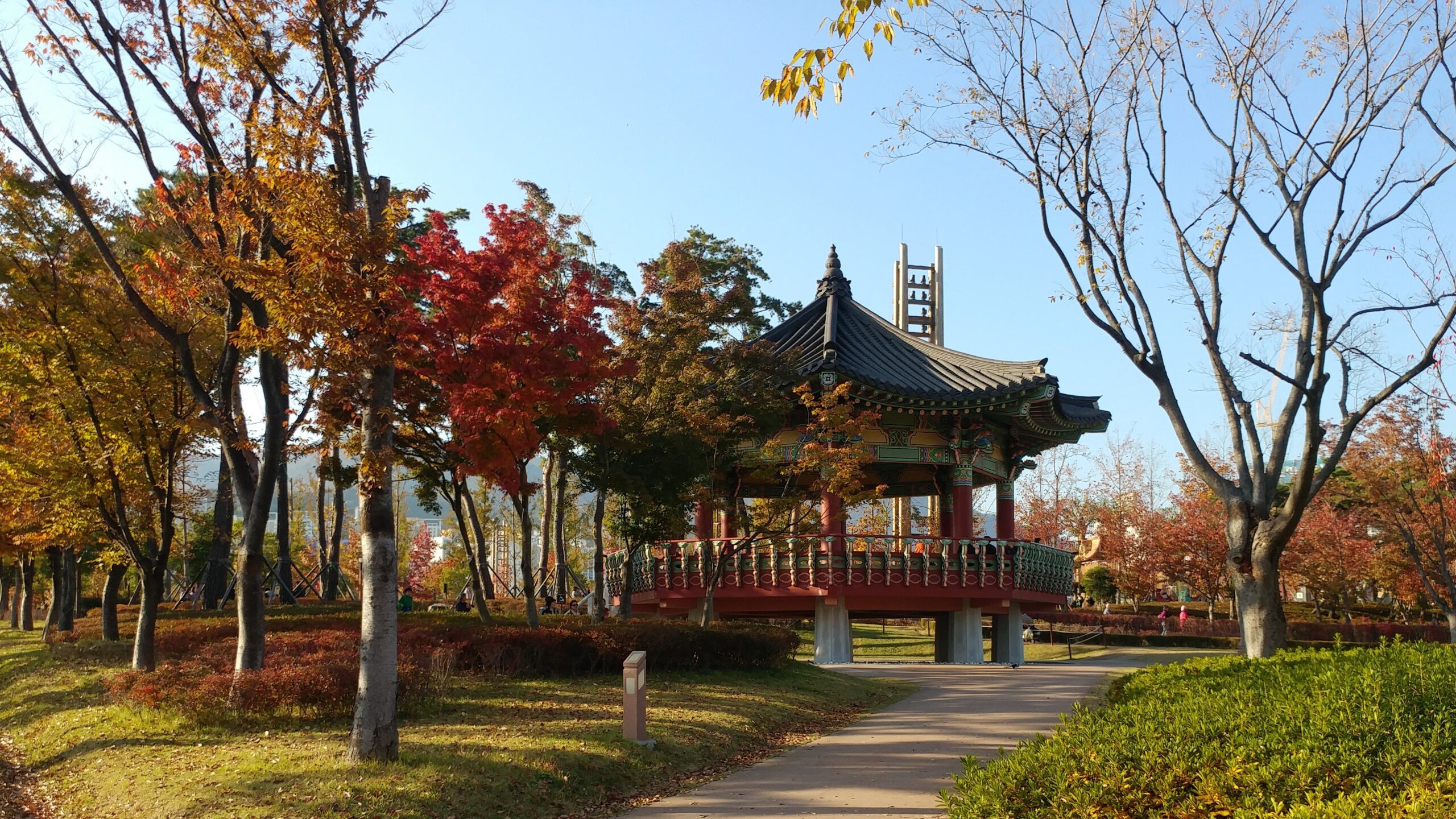South Korea is one of the best places to live in terms of safety, comfort, quality of products and services! This country is well-known for its rapid progress in developing technologies (especially information and communication ones), dynamicity in designing and building cities infrastructures, and globalization in different spheres, from trading to education. A lot of universities in Korea expand their education programs attracting international students from different countries. Once, students arrive to Korea to study, they can easily accommodate to the local life and spend their free time enjoying visiting popular tourist places, watching breathtaking views from mountains, walking through beautiful parks, staying at the sea sides.
In order to estimate the approximate cost of living in Korea while studying at a university, below we present the main cost categories and average prices for goods and services. We hope this will help university applicants and their parents to draw up an approximate budget for each month.
Living expenses
Housing:
Every university campus has dormitories for students, accommodating from 1 to 4 students in one room. Photos and prices for dormitory rooms can be checked on each university homepage and they vary from about 350$ to 1100$ per semester (about 4 months). During winter and summer vacations, students can still stay in dormitories and pay for it additionally, or leave the rooms and visit their families while, if necessary, packing and keeping personal belongings in a designated storage place in the dormitory. All dormitories’ rooms are usually furnished with beds, desks, chairs, wardrobes and mostly with air conditioners (or A/C systems). Common laundry rooms are located on each or designated floors and small fees may be required (e.g., 500~1,500 KRW for one wash cycle). Living in dormitories is usually the best option since they are located inside a university campus, i.e., students do not need to spend extra time and money for commuting. It is also cheaper in most cases comparing to renting even a single room/studio in officetel or villa.
In order to rent a place to live outside of a university campus, one may consider the following options:
- Goshiwon/Goshitel
- Hasuk/Hasukjib
- Oneroom/Studio/Officetel
Goshiwon (or goshitel) is usually a few-story building with some number of single rooms on each floor. Rooms are usually quite small, have a single bed, cable TV, desk and maybe a small fridge. Depending on goshiwon/goshitel, there may be personal toilet/shower in some rooms, or there can be the shared ones on each floor. Prices to rent rooms in goshiwons/goshitels vary from about 250$ to 450$ per month and no deposit is required (though sometimes there might be key deposit of one month rent fee). No extra payments such as for electricity, water, internet are required. Kitchen is also shared in such places. Laundry rooms are shared and can be used for free or for some small payments.
Hasuk/Hasukjib is quite similar to Goshiwon/Goshitel, though rooms are larger in size (with the same basic furniture as in Goshiwons) and meals (usually breakfast and dinner) are included in the rent price. Facilities like toilet/shower room may also be either private or shared; kitchen and laundry rooms are shared. Prices to rent start from about 250$-300$ per month and higher depending on city and location. Deposit may also be needed in some Hasuk houses (starting from one month rent price and higher).
Oneroom/Studio/Officetel – these are different from the previous places first of all in terms of renting system. Starting from onerooms/officetels and up to large apartments, it is required to sign a contract with the owner (minimum for 1-2 years) and make quite higher deposit which will be returned when moving out. Some amount of deposit may be held for cleaning, repairing broken facilities and to pay remaining utilities bills (gas, electricity, water…) Usually, the higher is deposit, the lower is monthly rent fee for oneroom/studio/officetel, e.g., for every additional 1000$ on the original deposit, monthly rent can be lowered by 10$ – this may be negotiated with the owner before signing a contract.
-
- Onerooms are usually small apartments with only one room, small (separate) kitchen, toilet/shower or bathroom. Sometimes there may be a small balcony in a room. Such rooms are usually available in 3~5 story buildings called “villa”. There may be elevators in some villas.
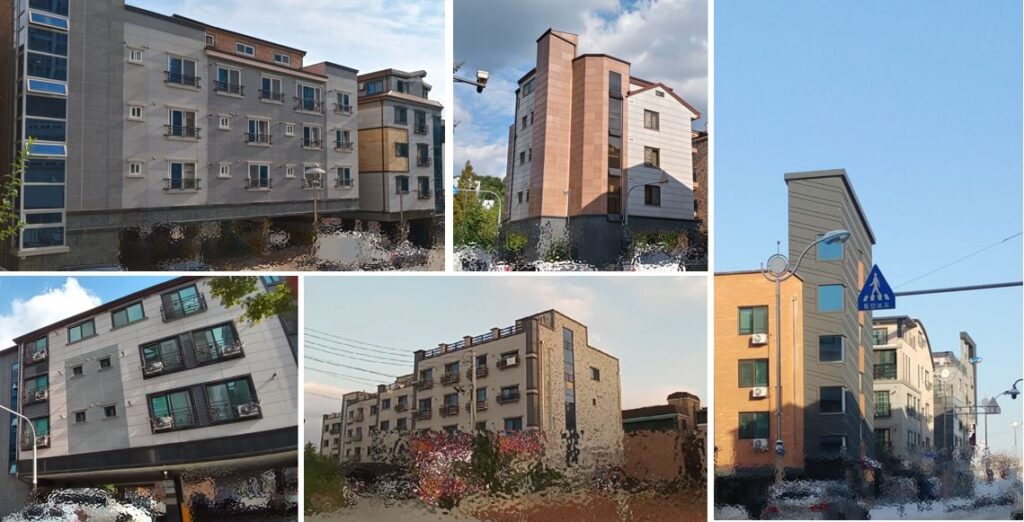
-
- Studio/Officetel – these are also single room studio apartments and usually are available in multi-story buildings (over 10 floors). The kitchen is usually just a small zone at the entry of a studio, no balconies in rooms and no bathtubs in bathrooms (only showers).
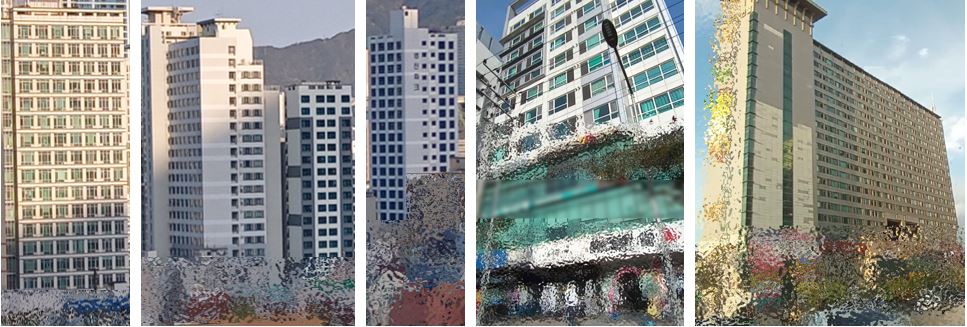
In most cases, all single room apartments (in villas and officetels) come furnished with wardrobe, kitchen storages, gas/induction stove, air conditioner, laundry machine, refrigerator.
As for utilities bills, in onerooms (in villas) tenants usually pay only for gas and electricity (minimum about 15~30$ per month in total in warm seasons, and higher payments for gas in winter). Though in studios/officetels, tenants must pay all utilities bills by themselves and make contracts with selected providers for connecting internet and TV.
Average prices for oneroom/studio/officetel vary within 2,000$/250$ ~ 10,000$/500$ [deposit/monthly rent] depending on the location, building/room size and its condition.
Groceries and foods:
Majority of the basic products used to be consumed in different countries are also available in South Korea and sold in almost every supermarket (such as Homeplus, E-Mart, Lotte Mart, Lotte Super, The Mart, Nonghyup Mart, No Brand, etc.), as well as in street and city markets.
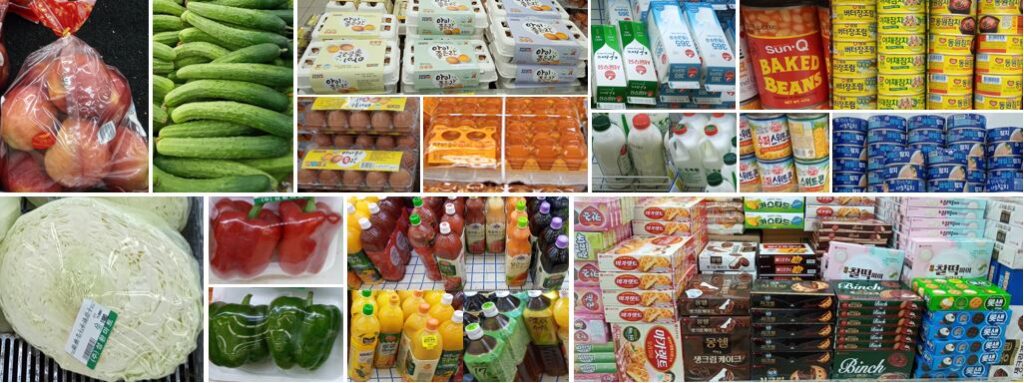
Depending on the season, prices for vegetables and fruits may vary. Here are the average prices for some products as of end of September 2021:
- Apples – 6,980 KRW (1 bag with 6~8 apples)
- Oranges – 10,390~16,500 KRW (1 bag with 6~8 oranges and more, up to ~4kg)
- Bananas – 5,700~11,900 KRW (depending on size and number of bananas in 1 bunch)
- Tomatoes – 6,980~17,800 KRW (from 1 to 4 kg, depending on size as well)
- Cucumbers – 980~1,000 KRW (2 pcs) or 1,500~1,800 KRW (3 pcs)
- Cabbage – 1,500~1,980 KRW (for ½ of a cabbage)
- Potatoes – 2,500~9,200 KRW (from 1 to 5 kg)
- Onions – 2,300~7,400 KRW (from 1 to3 kg)
- Milk – 2,850~5,280 KRW (for a bottle from 1L to 1.8L)
- Eggs – 3,980~8,800 KRW (for a pack from 10 to 30 eggs)
- Yoghurts – 2,980~5,680 KRW (for a pack of 4~6 small cups of yoghurt or a large cup)
- Juices – 2,100~5,200 KRW (for a 1.5L bottle)
- Sausages – 3,980~8,900 KRW (for a pack with 4~14 sausages)
- Chicken (fresh meat) – 5,000~7,000 KRW (for 1 chicken)
- Spaghetti – 1,750~4,500 KRW (1 pack of 500gr)
- Rice – 27,000~32,000 KRW (1 bag of 10kg)
- Canned tuna – 1,980~2,200 KRW (for 1 can, 90-100gr)
- Canned baked beans – 1,480~2,200 KRW (for 1 can, 420~450gr)
- Canned sweet corn – 1,300~1,580 KRW (for 1 can, ~200gr)
- Cookies/Crackers – 1,000~3,000 KRW (for 1 box up to 200gr)
In addition to cooking in a dormitory kitchen (if available), university students also eat at campus cafeterias (2,500~6,500 KRW per meal) or small restaurants/diners (식당/shiktan) off-campus for similar or slightly higher prices. The most popular not spicy (or a bit spicy/hot) meals among international students in Korea are:
- Kimbap (Gimbap), 김밥 – sliced rolls with rice and assorted fillings (vegetables, canned tuna, ham, beef, cheese, etc.), prices vary from 2,500 to 3,500 KRW and a bit higher.
- Donkkaseu, 돈까스 – a fried pork cutlet with sauce and sided with rice. Sometimes a cutlet can be with (mozzarella) cheese inside, it is called “cheese donkkaseu” (치즈 돈까스). There are also fish cutlets, called “saengsunkasseu” (생선 까스). Average price for 1 portion is about 6,500~8,500 KRW.
- Mandu, 만두 – these are basically dumplings in different shapes and with different filling (mostly a mix of pork/beef meat, glass noodles, onions and some other vegetables, it can also be filled with mix of meat and kimchi). Depending on a dish with mandu (steamed, fried, boiled, or a soup with mandu), prices for 1 portion range within 2,500~6,000 KRW.
- Kalguksu, 칼국수 – despite the presence of a variety of dishes with different noodles in Korea, many of them add hot sauce with red (hot) pepper. Kalguksu – seafood noodles, served in broth (bouillon). The price is usually about 5,000~7,000 KRW for 1 portion of these noodles.
- Soups: seolleongtan (설렁탕), gomtang (곰탕) (varieties of beef soup / 7,000~9,000 KRW) and samgyetan (삼계탕) (chicken soup / 12,000~15,000 KRW).
Since South Korea is surrounded with seas on its west, south and east sides, there is a wide range of seafood as well with a lot of dishes with fish (mostly baked and fried). There is also a large number of bakeries here, where everyone will find pastries for every taste, and in numerous coffee shops you can meet friends for coffee or tea with a sandwich or cake, or sit alone with a free Wi-Fi. Coffee prices range on average from 3,500 to 6,000 Korean won for 1 cup, depending on the place. There are also chains of burgers, fried chicken and pizza restaurants in Korea and menus with prices can easily be found online. Foreigners in Korea who miss their national cuisine can find restaurants and shops with menus and products from their country, or try other countries’ dishes as well. A lot of long-staying residents also get used to internet-shopping in Korea and nearly every product can be found online for a bit cheaper price and delivered to a door!
Transportation:
Public transportation system is very convenient in Korea to commute within the cities and to travel around the country as well. There are 5 major metropolitan subway/metro systems in Korea in the following cities/areas:
-
- Seoul metropolitan area (covering Gyeonggi province and connecting Seoul to Incheon, Cheonan, Chuncheon and other neighboring towns)
- Busan
- Daegu
- Gwangju
- Daejeon
There are three ways to pay the subway fare:
-
- Buy a single-use ticket at a station (500 KRW will be deposited for it and can be refunded after arriving to the destination station and returning it into a deposit refund machine)
- Buy a transportation card (Tmoney or Cashbee).
- Pay by a debit/check or credit card (issued in Korea) with added transportation card functionality.
The second and third options are the best ones for long-term staying residents in Korea. Below are the examples of transportation cards (Tmoney, Cashbee):

These transportation cards can be bought (for 2,500 ~ 5,000 KRW) and desired amounts deposited on it (up to 500,000 KRW) at the majority of the convenience stores like CU, GS25, 7-eleven and some others as well as in subway in ticketing machines. Instructions on using ticketing machines are also available in English language.
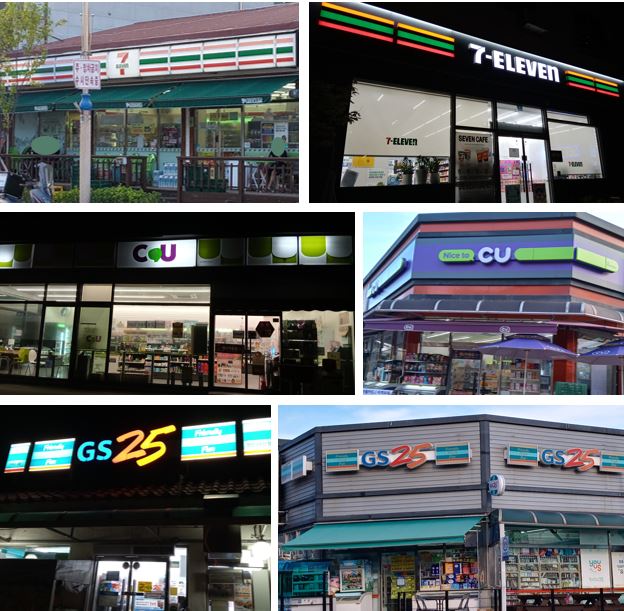
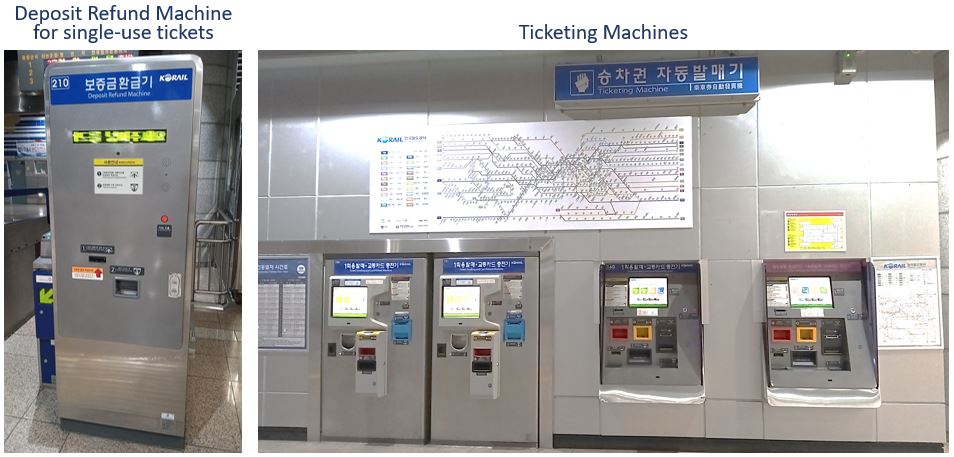
Tmoney and Cashbee transportations cards can also be used to pay fares in buses and most of the taxis.
Those who open accounts in Korean banks, can ask to add Tmoney “function” to their debit/check card so that all public transportation fares will be taken directly from the bank account, or when making a credit card, ask to make it also available for public transportation payments (후불교통) – in this case all public transportation payments will be summarized and automatically taken from the bank account 1 time every month.

Paying with transportation cards (or such options in bank cards) in buses and subway/metro is a bit cheaper comparing to payment with cash.
General price for an adult to pay for one trip on subway/metro starts from 1250 KRW in Seoul (1300 KRW in Busan) and varies depending on a distance travelled.
One local trip within a city/town by bus costs 1,500 KRW by cash or 1,450 KRW by transportation card. Prices may be different depending on a city/town and type of a bus.
As of end of September 2021, basic fare for a taxi is 3,800 KRW (Seoul, Incheon) and 3,300 KRW (Busan, Daegu, Gwangju, Daejeon and other cities) for the first 2km and 100 KRW are added for every 125~135 meters or 31~34 seconds of a trip, depending on a city. Night time, 00:00~04:00, prices for taxi are higher by 20% in most cities/towns.
Approximate total prices for the trips by bus/subway/taxi and combinations of them can be checked in Korean search engine Naver in the tab with Map (지도) by selecting departure and arrival points.
In order to travel between cities, one can select using either intercity buses or trains. Tickets can be bought both online (through websites or mobile apps) and offline (in the bus/train stations in automated machines or at the ticketing offices).

